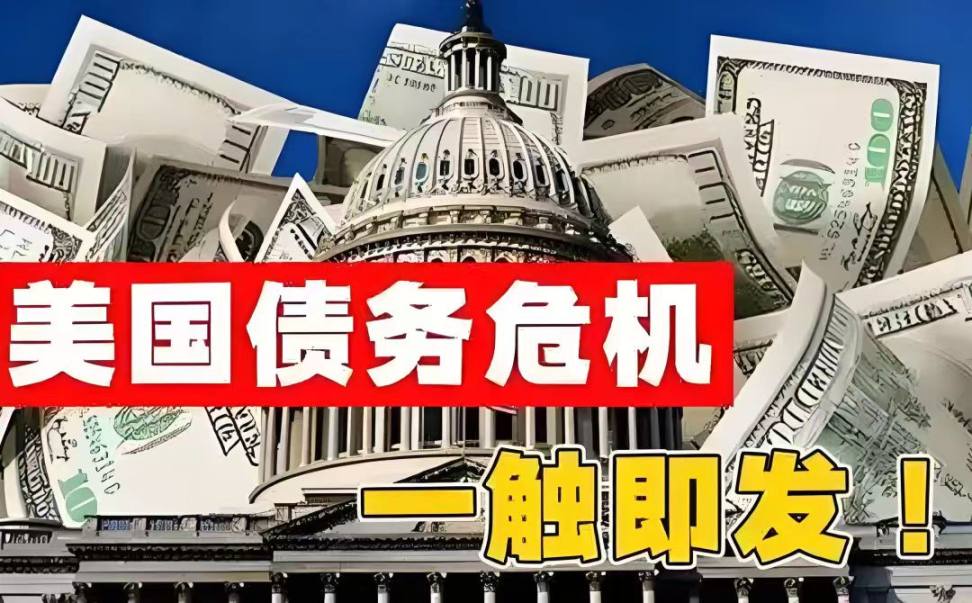The chain reaction of US Treasury sell-off from price drop to fiscal dilemma

Reprinted from panewslab
04/15/2025·10DThis article will take Japan's holdings of US$1.2 trillion in US Treasury bonds as an example to analyze the price declines, rising yields, and the far-reaching impact on US fiscal policy caused by the sale of Treasury bonds, revealing the logic and risks behind this financial phenomenon.
Written by: Peter_Techub News
introduction
U.S. Treasury bonds, known as the "safe harbor" of global financial markets, are essentially "IOUs" issued by the U.S. government when borrowing from investors. These IOUs promise to repay the principal on a specific date and pay interest at the agreed interest rate. However, when countries or institutions holding government bonds choose to sell for various reasons, it will trigger a series of market reactions, which will in turn affect the US and even the global economy.
This article will take Japan's holdings of US$1.2 trillion in US Treasury bonds as an example to analyze the price declines, rising yields, and the far-reaching impact on US fiscal policy caused by the sale of Treasury bonds, revealing the logic and risks behind this financial phenomenon.
1. The essence and market opportunity of US Treasury bonds

U.S. Treasury bonds are debt instruments issued by the U.S. Treasury Department to cover fiscal deficits or support government spending. Each treasury bond is clearly marked with the face value, maturity date and interest rate. For example, a Treasury bond with a face value of US$100, an annual interest rate of 3%, and a year later means that the holder can receive a principal of US$100 plus US$3 interest upon maturity, totaling US$103. This low-risk feature makes U.S. Treasury bonds a favorite among global investors, especially in countries such as Japan, with holdings of up to $1.2 trillion.
However, treasury bonds are not only held until maturity. Investors can sell it through the secondary market in exchange for cash. The trading price of treasury bonds is affected by market supply and demand: when demand is strong, the price rises; when supply is oversupply, the price falls. Price fluctuations directly affect the yield of treasury bonds and form the core of market dynamics.
2. The hypothetical scenario of Japan selling government bonds
Suppose Japan decides to sell some of its US Treasury bonds due to economic needs (such as stimulating domestic consumption or coping with exchange rate pressure), bringing a large number of "IOUs" out of $1.2 trillion to the market. According to the principle of supply and demand, the supply of treasury bonds in the market suddenly increases, and investors' bids for each treasury bond will drop. For example, a Treasury bond with a face value of $100 may only be sold for $90.
This price drop will significantly change the yield on Treasury bonds. Continue to take the government bonds with a face value of US$100, an annual interest rate of 3%, and a principal and interest repayment of US$103 after one year's maturity:
Normal situation: Investors pay $100 to purchase and receive $103 when maturity, with a yield of 3% ($3 interest ÷ $100 principal).
After selling: If the market price falls to $90, investors buy it at $90 and still get $103 when it expires, with a return of $13 and a return rate of 14.4% ($13 ÷ $90).
Therefore, the sell-off caused the price of Treasury bonds to fall and the yield rose. This phenomenon is called "the inverse relationship between bond prices and yields" in the financial market.
3. Direct consequences of rising yields

The impact of rising U.S. Treasury yields on the market and the economy is multidimensional. First, it reflects changes in market confidence in U.S. Treasury bonds. Rising yields mean investors demand higher returns to offset risks, which may be due to excessive sales or increased market concerns about U.S. fiscal health.
More importantly, the rising yield directly pushes up the cost of issuing new treasury bonds. The US government's debt management strategy is often called "debt repayment" - raising funds by issuing new treasury bonds to repay old treasury bonds due. If the market yield remains at 3%, the newly issued treasury bonds can use similar interest rates. But when market yields soar to 14.4%, new Treasury bonds must provide higher interest rates to attract investors, otherwise no one will be interested.
For example, suppose the United States needs to issue $100 billion in new Treasury bonds:
- 3% rate of return: $3 billion in annual interest expenses.
- When the rate of return is 14.4%: annual interest expenses increased to US$14.4 billion.
This difference means that the fiscal burden of the United States is increasing, especially considering that the current U.S. debt has exceeded $33 trillion (as of 2023 data, it may be higher in 2025). The surge in interest expenses will squeeze other budgets, such as infrastructure, health care or education.
4. Financial dilemma and the risk of "demolition of east walls and
repairing west walls"

The U.S. government's debt cycle relies on low-cost financing. When yields rise, new bond interest rates rise, and fiscal pressure rises sharply. Historically, the United States maintained debt sustainability by "demolting the east wall and replenishing the west wall" - borrowing new debts to repay old debts. However, in a high interest rate environment, the cost of this strategy is rapidly expanding.
Taking Japan's sell-off as the trigger point, assuming that market yields continue to be high, the United States may face the following difficulties:
- Debt snowball effect: High interest rates lead to an increase in the proportion of interest expenditure to the fiscal budget. According to the U.S. Congressional Budget Office (CBO) forecast, if interest rates continue to rise, interest expenses may account for more than 20% of the federal budget by 2030. This will limit the flexibility of the government in response to economic stimulus or crisis.
- Market confidence is shaken: U.S. bonds, as a global reserve asset, have abnormal yield fluctuations in their yields, may trigger investors' concerns about U.S. credit rating. Although the United States has maintained its AAA rating to date, S&P has downgraded its rating to AA+ in 2011. Large-scale selling may exacerbate similar risks.
- Monetary policy pressure: Rising U.S. Treasury yields may force the Fed to adjust its monetary policy, such as raising the federal funds rate to curb inflation expectations. This will further drive up borrowing costs and affect businesses and consumers.
V. Impact of the Global Economy

Japan's selling of US bonds is not only a problem for the United States, but also affects global financial markets:
- US dollar exchange rate fluctuations: rising US Treasury yields may push up demand for the US dollar, causing the US dollar to appreciate. This is not good for export-oriented economies such as Japan and may prompt it to further sell US debts, forming a vicious cycle.
- Emerging market pressure: Many emerging markets mainly denominated in USD debt. The appreciation of the dollar and high interest rates will increase its debt repayment costs, which may trigger a debt crisis.
- Global asset re-allocation: The decline in U.S. Treasury prices may prompt investors to re-allocate assets and flow to other safe assets (such as gold) or high-risk assets (such as stock markets), causing market volatility.
6. How to deal with the risk of selling?
To alleviate the crisis caused by the sale, the U.S. and the global financial system need to take multiple measures:
- U.S. fiscal reform: By optimizing taxes or reducing spending, reducing reliance on debt financing, and enhancing market confidence in U.S. bonds.
- International Coordination: Major creditor countries (such as Japan and China) and the United States can negotiate to gradually reduce their holdings of US debt through bilateral negotiations to avoid violent market fluctuations.
- Fed intervention: In extreme cases, the Fed may purchase U.S. bonds through quantitative easing (QE), stabilizing prices and yields, but this may exacerbate inflation risks.
- Diversified reserves: Global central banks can gradually diversify foreign exchange reserves, reduce their dependence on US bonds, and diversify the risks of a single asset.
Conclusion
U.S. Treasury bonds are not only the government’s “IOU”, but also the cornerstone of the global financial system. Japan's hypothetical scenario of selling $1.2 trillion in US bonds reveals a delicate and complex balance in the Treasury market: the sell-off leads to price declines and yields rise, which in turn pushes up U.S. fiscal costs and may even shake global economic stability. This ripple effect reminds us that debt decisions in a single country can have far-reaching global consequences. Against the current background of high debt and high interest rates, countries need to be cautious in managing financial assets and jointly maintain market stability to avoid the debt game of "demolition of east and west walls" becoming an uncontrollable fiscal dilemma.
